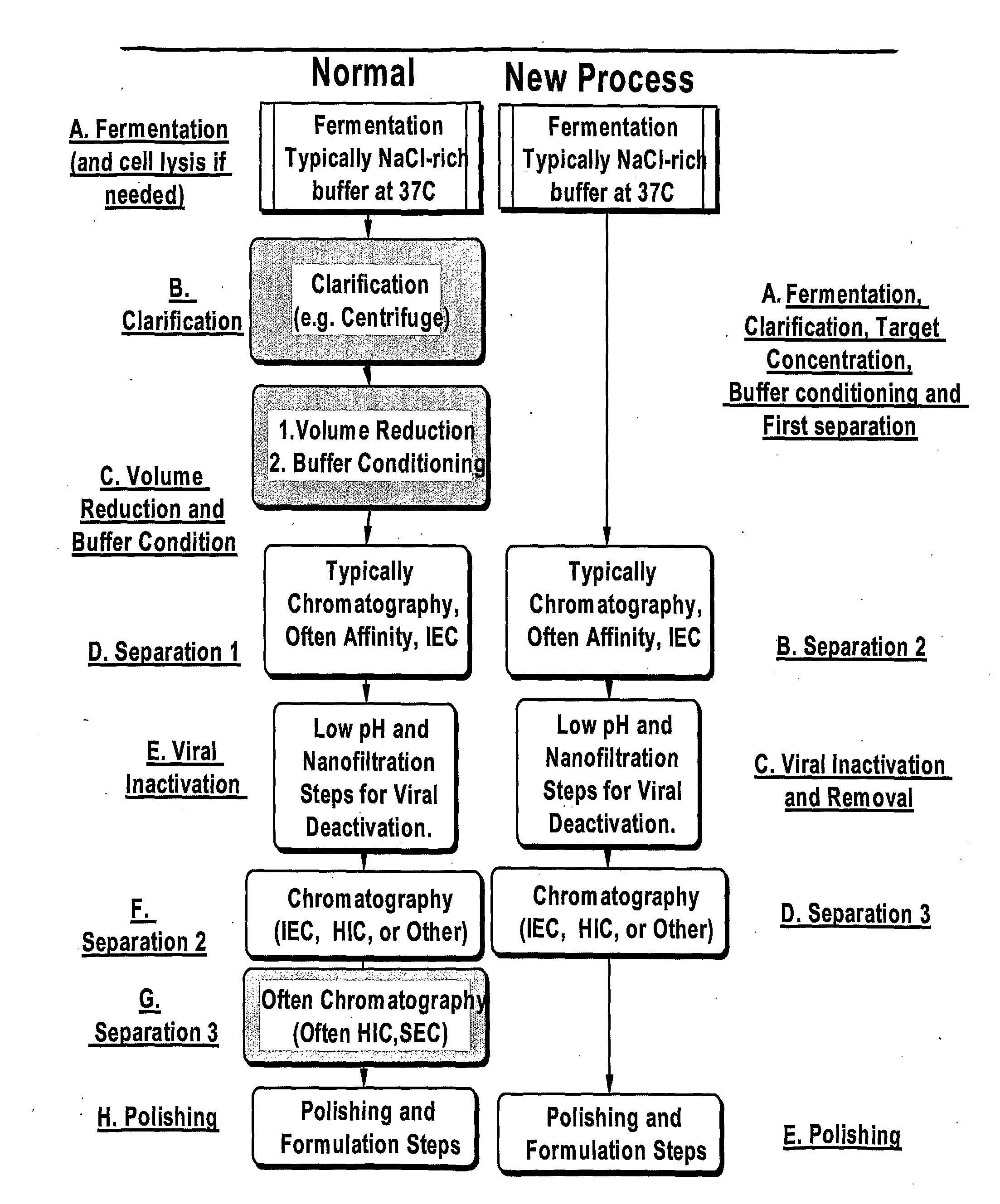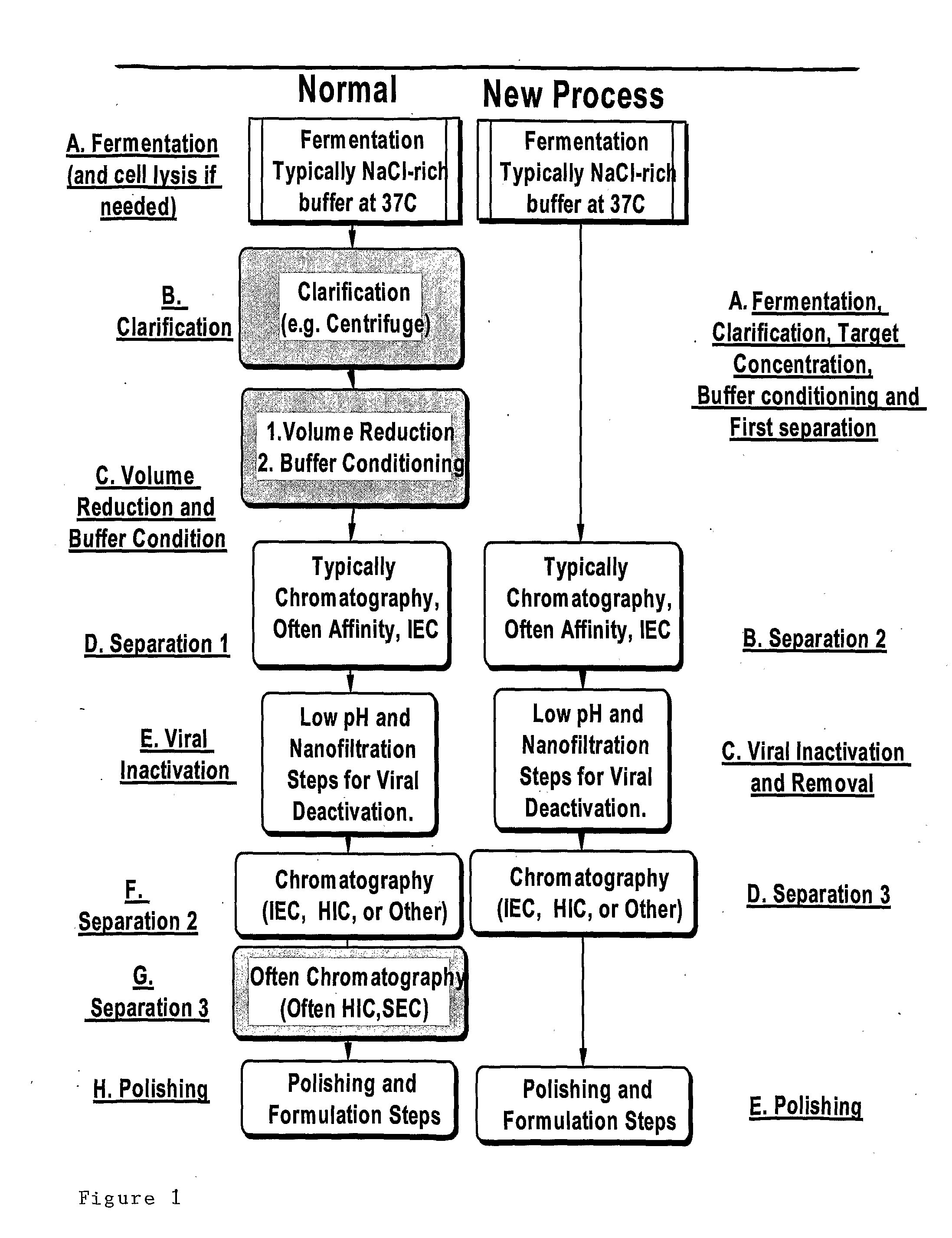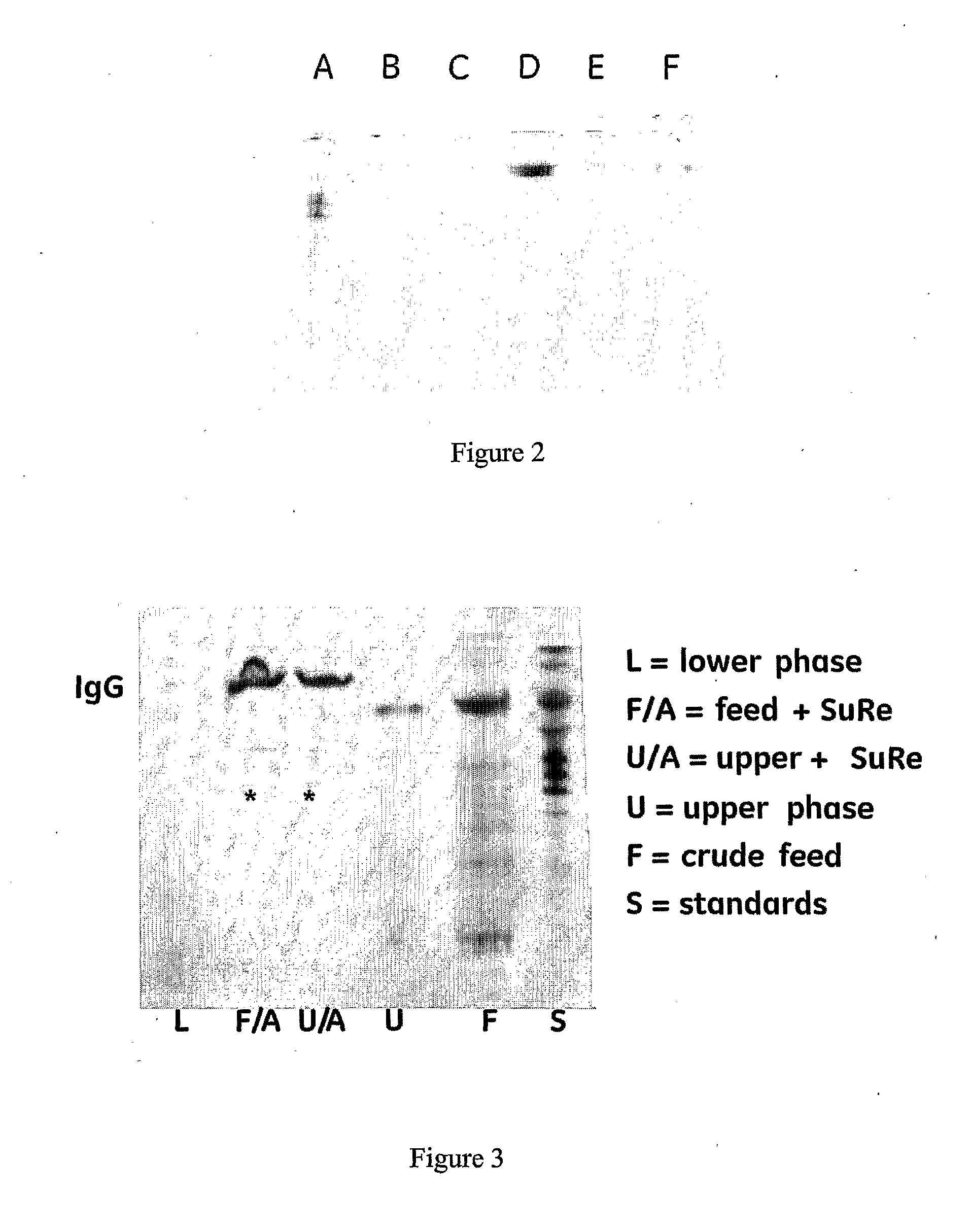Separation method using single polymer phase systems
- Summary
- Abstract
- Description
- Claims
- Application Information
AI Technical Summary
Benefits of technology
Problems solved by technology
Method used
Image
Examples
example 1
Effect of Na Phosphate Concentration and pH on Formation of ATPS
[0090]Aqueous two-phase system (ATPS) based on one polymer (EOPO) were prepared directly in a 10 ml Sarstedt tube by mixing appropriate amounts / volumes of the stock solutions. The final volume of each system was 5 ml. The mixtures were vortexed about 30 seconds and were then heated to about 40° C. in a water bath for about 15 minutes for phase formation.
[0091]ATPS based on 8% EOPO, 150 mM NaCl and 50-200 mM NaPhosphate buffers at pH 4, 6, 7 and 8 were prepared. After incubation at 40° C. in a water bath for about 15 minutes two-phase systems formed at all the pH studied.
[0092]In another set of experiments different concentrations of NaPhosphate buffer at pH 7 were used to prepare ATPS of 8% EOPO containing 150 mM NaCl.
[0093]The results suggested that[0094](1) No two phase systems were formed when low concentration of Na phosphate (20 mM) was used. However, when the Na phosphate concentration was increased to 50 mM the t...
example 2
Effect on ATPS Formation and Protein Phase Partition of Antibody Concentration, or Use of GFP Containing Lysed E. coli Cell Paste
[0097]ATPS based on one polymer (EOPO) were prepared according to description in Example 1. Table 2 shows four systems at different conditions where polycloanl IgG Gammanorm, or recombinant green fluorescent protein (GFP) containing lysed E. coli cell paste samples were tested.
TABLE 2Phase Partition of Polyclonal Plasma IgG and GFP from E. coli.C / Co =EOPO %NaPNaClPhaseVol. ratio(K / K + 1)(w / w)mMpHmMform(U / B)SampleK A280* 100%1102007200Yes3.8 / 1.225 mg9.390Gnorm210207200No—25 mg——Gnorm382007150Yes4 / 125 mg>500100Gnorm482007150Yes4 / 1200 mg>500100GFPK = CA280 upper phase / CA280 lower phase. Gnorm = Gammanorm IgG concentrate at 165 mg / ml (Octafarma) so 25 mg relates to 152 microliters. NaP = NaPhosphate pH 7. GFP was in form of lysed E. coli cell paste.
[0098]The results indicate that:[0099](1) Under the conditions studied no two phase system formed when low concen...
example 3
Citrate Based EOPO One Polymer ATPS
[0105]Phosphate salts are suitable for phase system formation with Breox polymer in part as they form systems at relatively low concentration of salts (e.g. one tenth that of some PEG and salt two phase systems) and also because the systems formed appear to offer good target protein recovery and some selectivity as regards to non-target proteins. However phosphate salts are expensive to purchase and also expensive to dispose of By contrast citrate salts are less expensive and more ecologically friendly. NaCitrate buffer was tested here in preparation of new systems. Different concentrations of NaCitrate buffer, pH 7.0 at different temperatures as shown in Table 3 were used for preparation of systems containing 8% EOPO and 150 mM NaCl.
[0106]The result showed that:[0107]Two phase systems can be formed with NaCitrate concentrations of 50-200 mM at a temperature of about 40° C.[0108]Two phase systems can be formed with NaCitrate concentrations of above...
PUM
| Property | Measurement | Unit |
|---|---|---|
| Fraction | aaaaa | aaaaa |
| Mass | aaaaa | aaaaa |
| Fraction | aaaaa | aaaaa |
Abstract
Description
Claims
Application Information
 Login to View More
Login to View More - R&D
- Intellectual Property
- Life Sciences
- Materials
- Tech Scout
- Unparalleled Data Quality
- Higher Quality Content
- 60% Fewer Hallucinations
Browse by: Latest US Patents, China's latest patents, Technical Efficacy Thesaurus, Application Domain, Technology Topic, Popular Technical Reports.
© 2025 PatSnap. All rights reserved.Legal|Privacy policy|Modern Slavery Act Transparency Statement|Sitemap|About US| Contact US: help@patsnap.com



